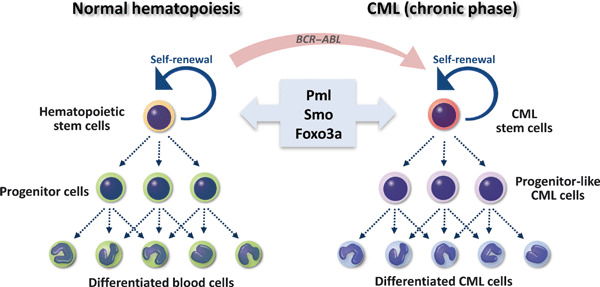Figure 1.

A link between molecular mechanisms regulating self‐renewal activity in normal hematopoietic stem cells (HSCs) and in chronic myeloid leukemia (CML) stem cells. HSCs, which top the hierarchy of the normal hematopoietic system, are defined by both their ability to self‐renew and to give rise to all lineages of mature hematopoietic cells throughout an individual’s lifetime. A rare population of CML stem cells also can self‐renew and generate progenitor‐like and differentiated CML cells, indicating that CML cells in the chronic phase form a hierarchy similar to that of normal HSCs. Several lines of evidence demonstrate that the emergence of CML cells requires BCR–ABL expression in normal HSCs. Recently molecules regulating normal HSC fate, including promyelocytic leukemia (Pml), Smo, and forkhead box class O (Foxo)‐3a, have also been shown to govern CML stem cell function. These observations support the idea that CML is “stem cell disease”.
